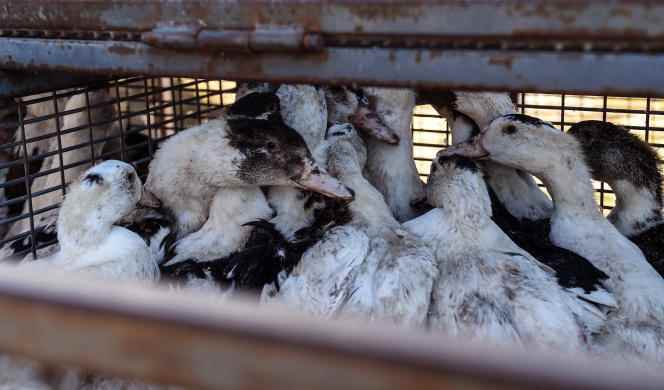On Wednesday August 31, an outbreak of highly pathogenic avian influenza was confirmed in a laying hen farm in the town of Landujan, in Ille-et-Vilaine. The 3,500 poultry were eliminated. There are now eight cases, including three in
Brittany, in farms on national territory. This reappearance of the virus, since the end of July, once again raises concern among breeders.
“We have no morale. It’s a house of cards that keeps collapsing.”reacts Sylvie Colas, poultry farmer in the Gers. “We were told that the virus had disappeared and there, we see two outbreaks appear in Morbihan and in other regions. I am very worried “, adds Christian Drouin, breeder in Essarts-en-Bocage, in Vendée. In March, his operation was affected by the H5N1 avian influenza virus and he had to, with the means at hand, euthanize 18,000 chickens. A difficult time to live.
Foie gras
From November 2021 to May 2022, France suffered an avian flu epizootic on an unprecedented scale. The virus first raged in the North, before spreading to the South-West region, the epicenter of duck farming and the production of foie gras. Then, at the end of February, the H5N1 virus hit Vendée and spread rapidly. It has also spread in Loire-Atlantique and Maine-et-Loire. Massive slaughters have been decided to try to stem the spread, in particular towards Brittany, the first French production zone for poultry and eggs.
At the end of July, the Ministry of Agriculture announced that France had regained a negligible risk status for avian influenza. The government justified the decision by emphasizing the absence of referenced cases in breeding since May 17 and considered that the crisis was over. On this occasion, he took stock of the health disaster and quantified the number of outbreaks at 1,378 and the number of poultry eliminated at 16 million, even if the professionals estimate it at 19 million or even 20 million.
“Why have we waited so long to talk about vaccination? – Sylvie Colas, poultry farmer in the Gers
But the virus was already affecting so-called “indigenous” wildlife on the coasts. First in the coastal departments of Hauts-de-France (Nord, Pas-de-Calais, Somme) mainly in gulls (gulls, gulls and terns), then these mortalities appeared in June on the Normandy coasts (Seine- Maritime, Calvados, Manche) to be observed in July on the coasts of Brittany (Côtes-d’Armor) and now in Loire-Atlantique and Charente-Maritime. In July, farms were in turn affected, in the Channel, in the Somme, Morbihan, Ain and therefore Ille-et-Vilaine, resulting in the euthanasia of the turkeys, laying hens or ducks concerned.
You have 40.57% of this article left to read. The following is for subscribers only.
